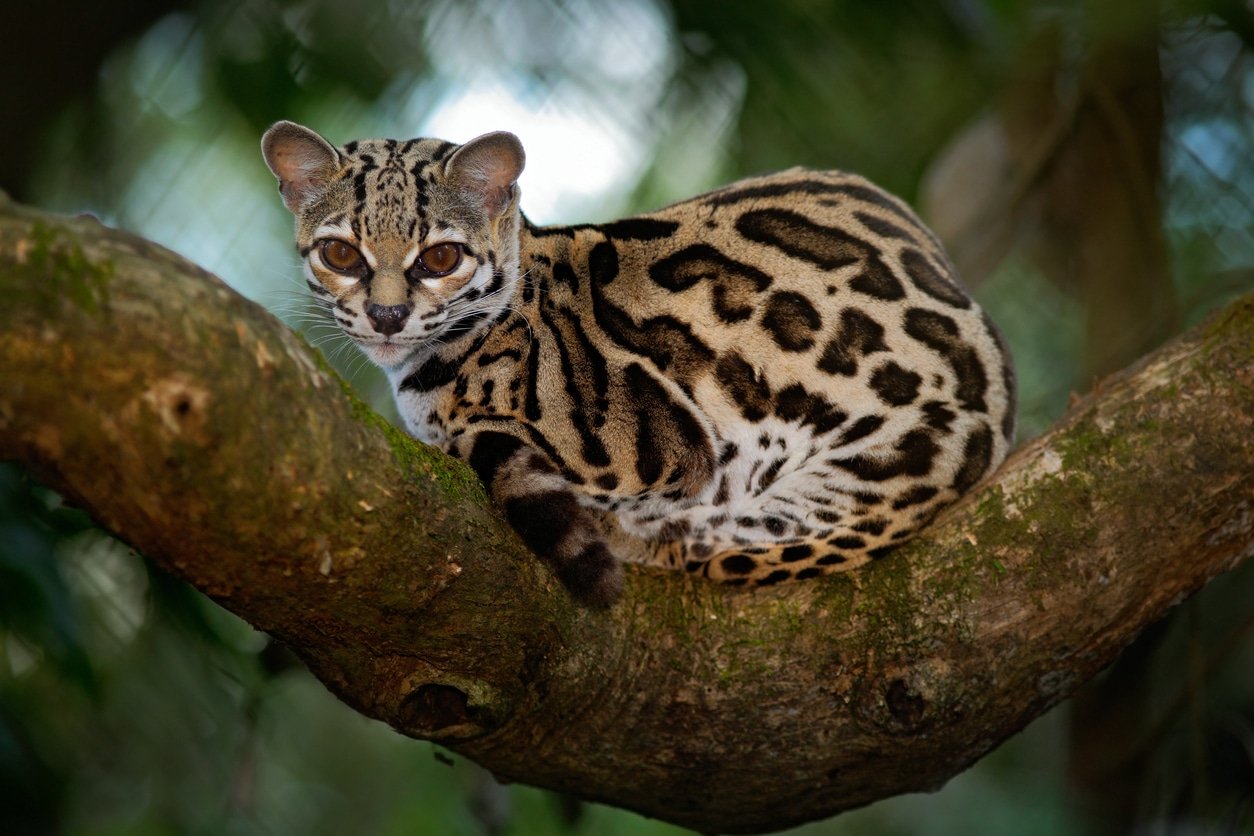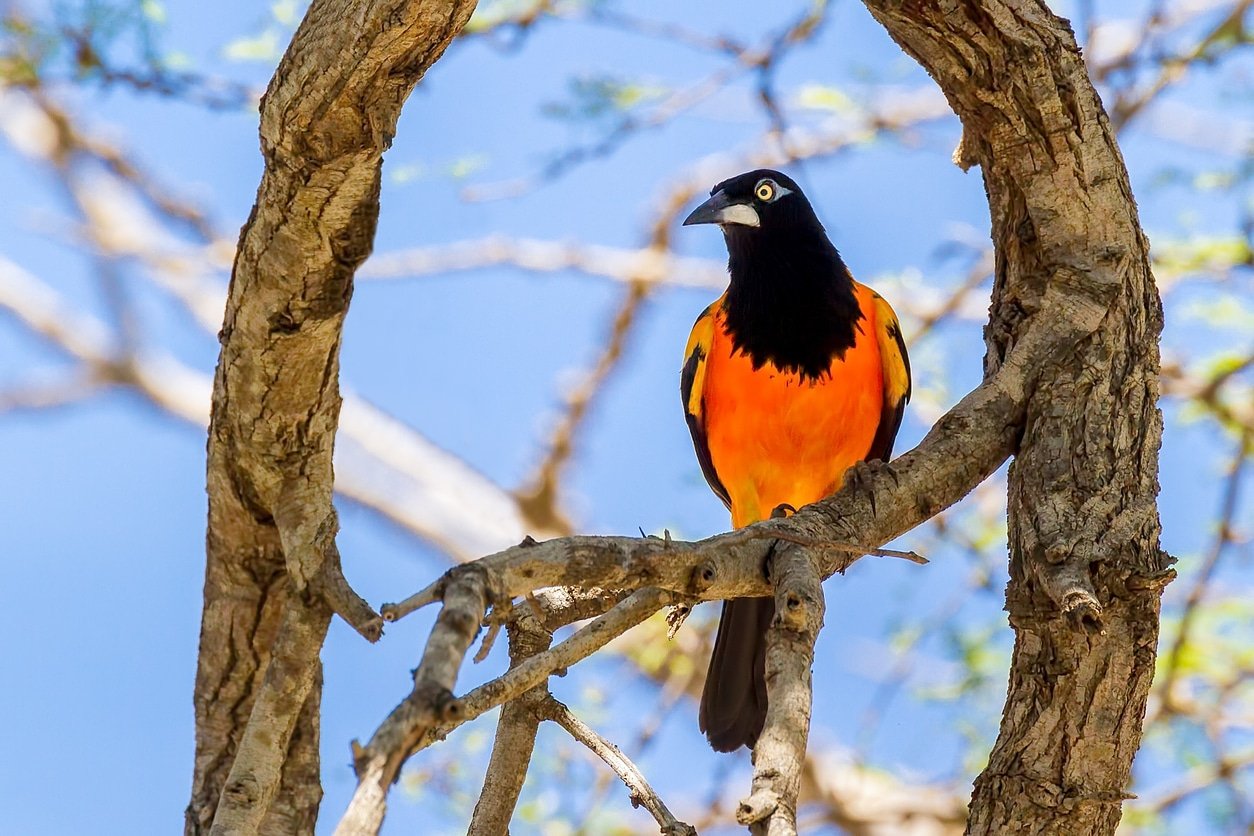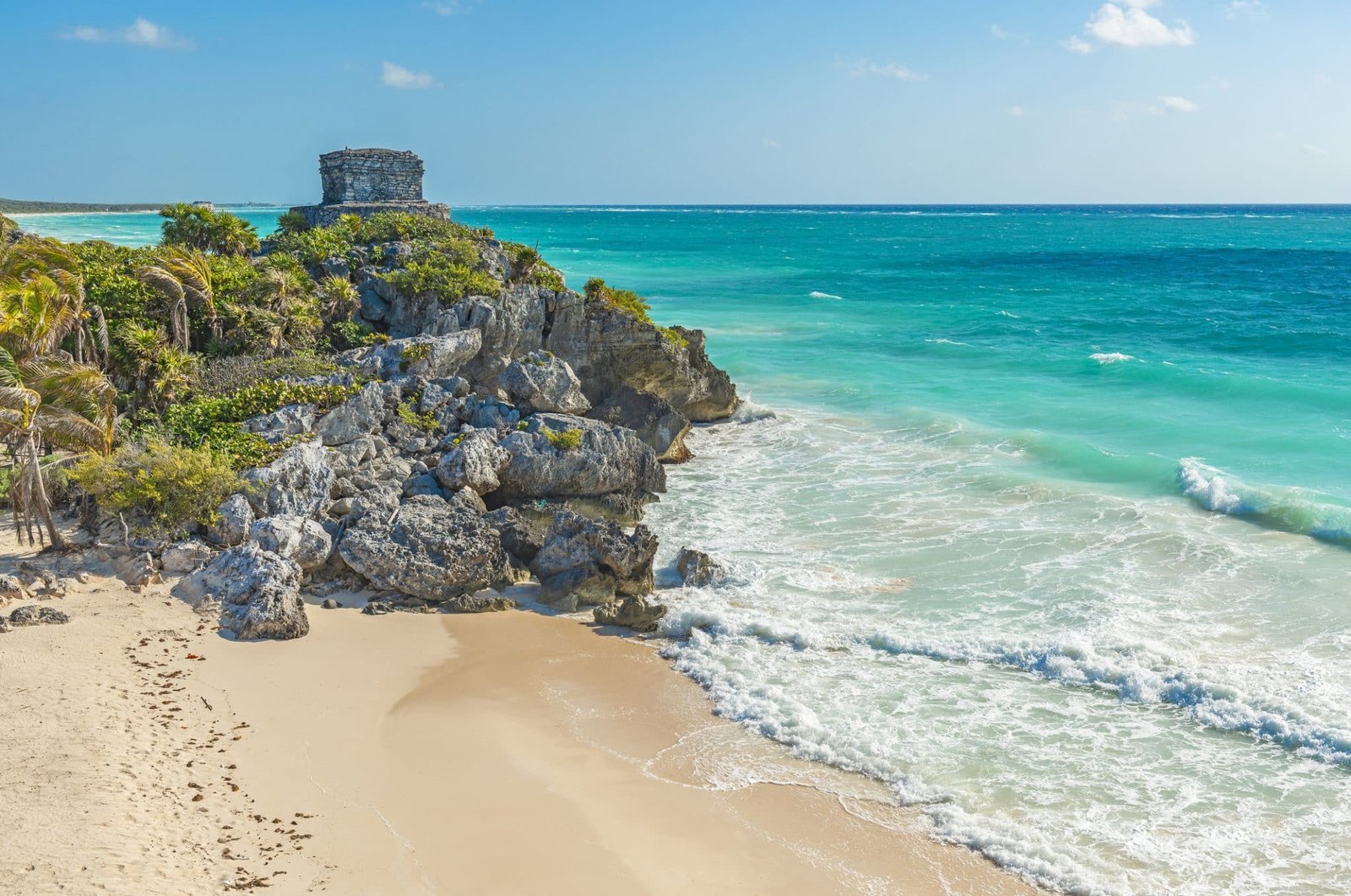Common, Rare & Dangerous Tulum Animals & Where To Find Them!
|
Prefer listening over reading? We got you covered!
Getting your Trinity Audio player ready...
|
Tulum is a magical place for tourists who want to get away from it all, and luckily there are plenty of things to do to keep you busy there. This tropical town is located on the Yucatan Peninsula in the state of Quintana Roo, so you can expect fabulous beaches, incredible wildlife, and rich culture.
The best part about Tulum is that it has something for everyone, from beach-lovers to history buffs to nature lovers. But what we really love about Tulum is that it’s a bit of an unknown wildlife haven. So if you’re looking for an exciting trip with plenty of wildlife to see, then Tulum might be your perfect destination.
So what animals in Tulum could you encounter? Well below we show you some of the most common, beautiful, rare, and dangerous animals in the region.
But most importantly, we share with you the best places to see each animal. That’s so your holiday can involve incredible wildlife spotting, as well as fun beach days and lively nightlife-fuelled evenings. Let’s get started!
CONTENTS:
- The Nine Most Common & Beautiful Animals In Tulum
- Six Incredible Rare Animals In Tulum
- The Five Most Dangerous Animals In Tulum

The Nine Most Common & Beautiful Animals In Tulum
There are a lot of beautiful animals in Tulum that you may not have heard about, many of them quite common and therefore easy to spot. Here’s nine we think you shouldn’t miss out on!
1. Black Spiny-Tailed Iguana
The pretty-looking Black Spiny-Tailed Iguana is native to hot, dry regions of southern Mexico and Central America. They are distinguished by their enormous size, rough, spiny scales on the tail, and dorsal crest.
You can usually see Black Spiny-Tailed Iguanas relaxing, feeding, and lying in the sun at the Tulum Maya Ruins. These tame lizards are used to large crowds of tourists and frequently bob their heads in response to eye contact!
The best time to spot these lizards is early morning or late afternoon, when they tend to wander around looking for food. If you’re visiting during these times, be sure not to miss out on this unique opportunity to witness some of the coolest animals in Tulum.

2. Howler Monkey
Of all monkeys, howler monkeys are the loudest. When others approach their territory, they call to warn them to stay away. The calls resemble an intense whooping bark or scream.
Punta Laguna Nature Reserve, roughly 40 miles north of Tulum, is one of the most distinctive tourist attractions in Yucatán, and you can hire a local guide there to take you on a hike to see and listen to howler monkeys. These guides are fantastic at locating them, and late afternoon is the ideal time to try and find them.

3. Sea Turtle
Near the lMaya ruins of Xel Ha, the Xcacel Turtle Sanctuary is a great location to swim and snorkel with giant sea turtles. And when you stay at The Beach Tulum Hotel, you might even observe Loggerhead and Green Sea Turtles nesting right in front of the hotel because Tulum’s lovely white sand beaches meet the exact requirements they need to nest.
You may also encounter one of these marine animals at Akumal Beach, which is about a 30-minute drive from Tulum and Playa Del Carmen. If you see one while snorkelling or diving off the coast of Tulum, make sure not to disturb them by getting too close or making loud noises or sudden movements.

4. Yucatan Jay
If you’re looking for a unique and beautiful animal to add to your list of things to see in Tulum, look no further than the Yucatan Jay. These interactive blue Jays are typically seen in flocks of 5 to 25, and they frequently chatter loudly amongst themselves.
Yucatan Jays are especially prominent and common in the woodland and forest edges on the Yucatan Peninsula, so look out for them in these areas. If you happen to see a Yucatan Jay during your trip, take some time to observe them, they’re definitely one of the most beautiful animals in Tulum.

5. Yucatan Squirrel
You’ve may have heard of the Yucatan squirrel, but we think they’re one of Tulum’s most beautiful animals. Known for their long bushy tails, these little guys eat fruit, nuts, seeds and insects. They spend most of their time in trees but come down to the ground to look for food and water.
A highly sociable species, the Yucatan squirrel can be found in every park in every town or city. You’re also likely to see this species while visiting any cenote or walking around the archaeological ruins in Tulum.
6. Collared Anteater
In addition to ants, collard anteaters consume termites, bees, and even some fruit. They use their pointed claws to attack and defend themselves, and their iconic long snouts to hoover up ants.
Because they are primarily nocturnal, this species is probably more prevalent in Tulum than it first appears. Typically, they spend the day in caves or hollow tree trunks. Punta Laguna Monkey Reserve, which is a 5000-hectare nature reserve also called Ma’ax Yetel Kooh, is home to these exciting and unusual mammals, and you can see them in the wild there.
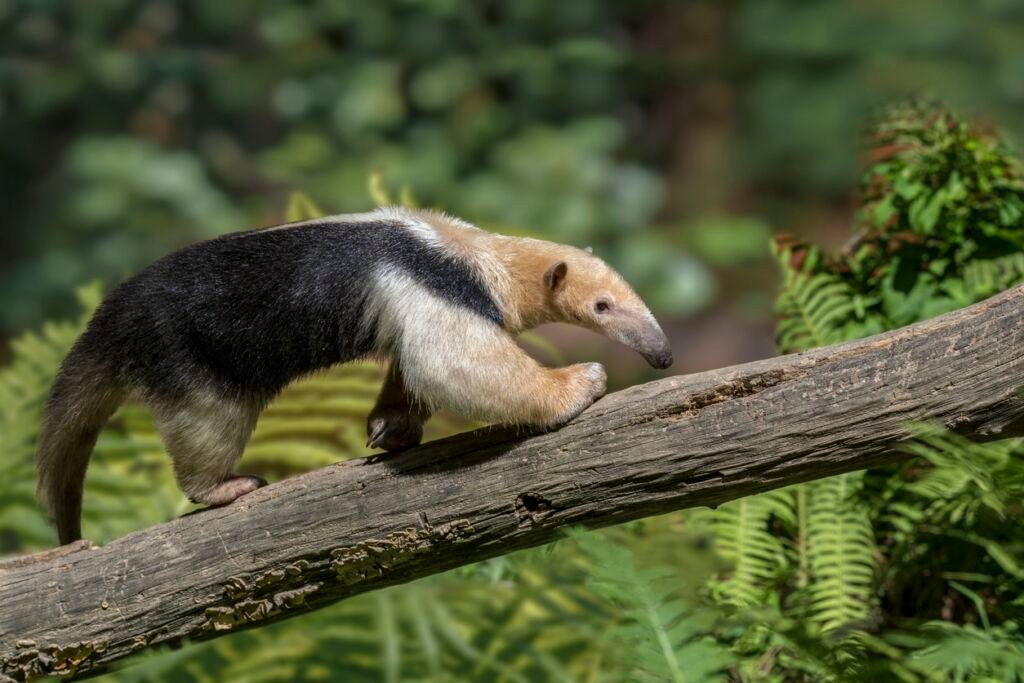
7. Puma
Mexico is home to many interesting animals, but one of the most striking is the puma. This large cat is known for its strength and speed, making it a formidable predator. They are very similar to other large cats in appearance, but their size and colouration make them stand out from the crowd.
At the Punta Laguna Nature Reserve, you can view many pumas living in their natural environment. Some are also visible in Tulum National Park, an eco-archaeological site on the Yucatán Peninsula of Mexico.

8. White-collared Peccary
Despite their resemblance to wild pigs, white-collared peccaries belong to another genus, Tayassuidae. They are one of three peccaries indigenous to the Americas and are significant seed dispersers so help keep Mexico’s forests growing.
The white-collared peccary, which stands two feet tall and weighs between 35 and 60 pounds, is a voracious eater and is continuously on the prowl for ripe fruit, tubers, and grasses. Pecarries camp in burrows and travel in packs. They produce a potent musk through their scent glands to identify their territory or signal danger.
The Akumal Monkey Sanctuary, which rescues various animal species, is where you can get a closer look at them.
9. Whale Shark
Whale sharks have a gentle nature and are very curious about visitors. They swim very slowly and pose no danger to humans, so you can get close enough to touch them. They are usually found in tropical waters around coral reefs. Still, they have been known to enter bays, estuaries, and deep ocean trenches where they hunt for giant squid or octopuses.
Swimming with whale sharks, the gentle giants of the deep blue, is one of the top things every visitor and diver should do. And the Mexican Riviera Maya is one of the best sites in the world to see whale sharks!
The balmy seas around Akumal Beach, which is an excellent place for a day trip from Tulum, may be one of the best places to discover and encounter whale sharks.
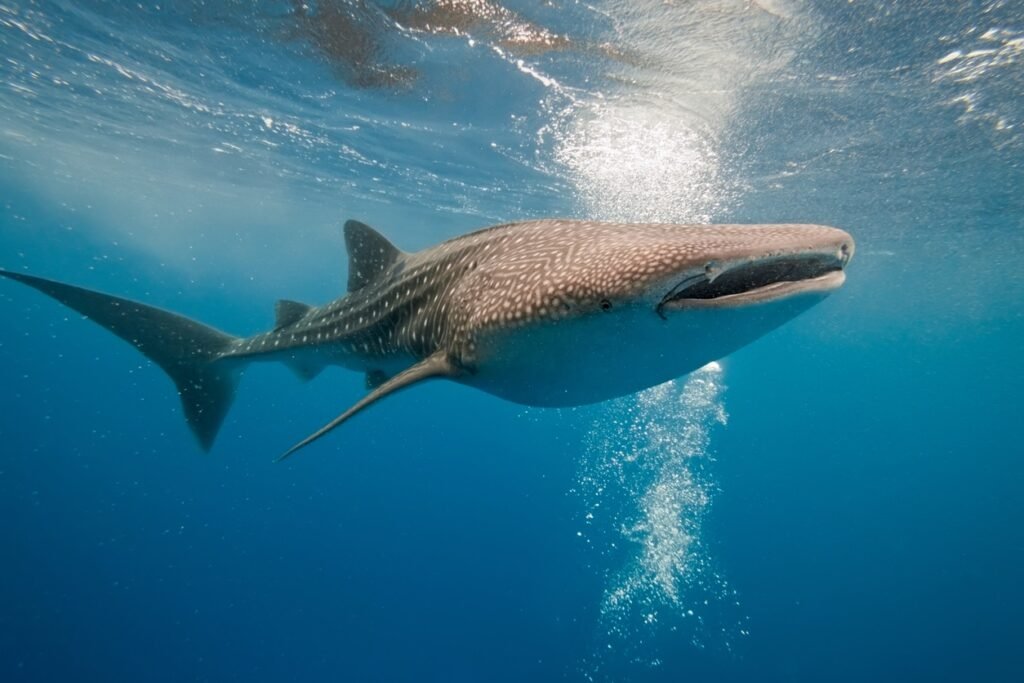
Six Incredible Rare Animals In Tulum
1. Nine-Banded Long-Nosed Armadillo
Nine-banded long-nosed armadillos are a unique animal that makes its home in Tulum. It is a medium-sized animal with an armoured shell and horny scales covering its entire body from head and tail. Amazingly, it can walk briefly underwater since it can hold its breath for roughly six minutes!
The Punta Laguna Spider Monkey Reserve, a significant ecosystem and reserve, offers the best opportunity to see these fascinating and unusual species in their natural habitat. They are most energetic in the very early morning, from 2:00 to 5:00 am, at least during the sweltering summer months.

2. Sereque
The sereque, or agouti, is a tiny, agile rodent that may just be the cutest animal in the world. Its pink-tipped nose twitches with interest, and the sereque itself is about the size of a domestic cat. Although its legs appear tiny, it can frequently outpace predators and jump nearly six feet. Agoutis, a keystone species, help trees reproduce by burrowing their seeds.
In Quintana Roo and the Yucatan peninsula, you might witness them strolling silently through gardens and even hotels. Most of the day is spent by the sereque foraging for nuts, seeds, tubers, and dropped fruit.

3. White-Nosed Coati
The white-nosed coati, a relative of the racoon, has a sweet face and is constantly on the move. These Tulum animals can be identified by their long, ringed tail and mask-like features.
Coatis are cunning escape artists with bizarrely joined bodies, including ankles that can rotate 180 degrees! That enables them to go headfirst down trees. The ancient Maya thought coatis possessed mysterious powers and could speak, and the animal was so revered that Maya artisans frequently carved statues and containers in its likeness.
Coatis are most frequently observed in places with many plants and trees, such as gardens or jungles. Numerous coatis reside in the vast grounds of the Bahia Principe Grand Tulum. You can also find them scavenging in the grounds of the remains of the Mayan city of Tulum at the Tulum National Park.

4. Tapir
The tapir is one of the strangest-looking animals in Tulum, it almost seems like it was pieced together from leftover wild boar and elephant parts. The most prevalent variety in Central America is the Baird’s Tapir.
These animals, which can weigh up to 800 pounds, are skilled at moving through the forest in stealthy silence while utilising their snout, which resembles a trunk, to reach vegetation in awkward places.
They spend a lot of time hiding below to stay cool, where they breathe using their snout like a snorkel. The tapir also called the “gardener of the forest,” is essential to disseminating seeds for more than 200 plant species.
Visit the Sian Ka’an Biosphere Reserve, a UNESCO World Heritage Site about 10 km south of Tulum, for the best opportunity to see them.

5. Ocellated Turkey
Consider this bird as the glitzy relative of the wild turkey seen in North America. The ocellated turkey is slightly smaller than its American cousin and has a light blue head and neck with vivid orange or red wartlike growths.
Its blue-grey tail feathers feature rust-tipped circular blue patterns, and its body feathers are a collection of iridescent blue, green, and bronze. Due to having some resemblance to the markings on a peacock’s tail, this bird is frequently referred to by the same Spanish name as the peacock, Pavo Real, which is Latin for Royal turkey.
These nocturnal creatures are usually seen foraging for berries, leaves, seeds, and insects in wooded regions. If you spend some time visiting the Cobá Archaeological Site, roughly 45 minutes from Tulum by car, you’ll probably come across small groups on one of the site’s ancient routes.

6. Margay
The margay is a swift, powerful, wild cat that can turn its hind legs 180 degrees, enabling it to rush headfirst down a tree! It looks a bit like a sloth but is much much faster, and it can hang from branches or walk upside down by grasping them with its claws.
Despite its small size, the margay possesses enormous amber eyes that appear almost coated with coal, all of which makes it easier to see its prey at night. Unfortunately the margay is a favourite of the illegal pet and fur trade because of its stunning coat of spots and rosettes.
Visit protected forest areas and you might catch a glimpse of the margay foraging in the trees for lizards, insects, birds, and even small monkeys.
Margay populations in the wild have decreased, so the Akumal Monkey Sanctuary may be your best bet for viewing one. They can also be found in the forests of Quintana Roo, 97 miles from Tulum, but they are rarely seen, especially during the day.
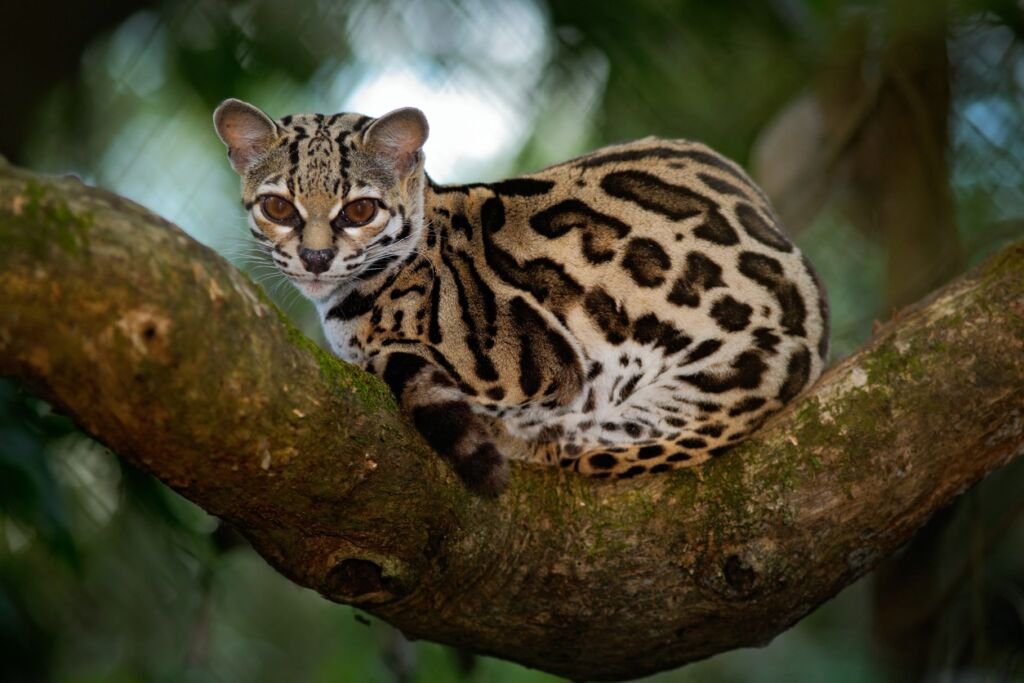
The Five Most Dangerous Animals In Tulum
1. Stonefish
Even though Tulum offers one of the ultimate beach experiences, you should be prepared because a stonefish could seriously harm you. The stonefish is renowned for its superior underwater camouflaging abilities. If you mistake it for a rock and pick it up, it will likely sting you.
In fact this fish is so dangerous its venom can be fatal. Whenever you are in the water or the ocean, exercise caution. Most stonefish stings come about due to swimmers stepping on the fish in error.
Even though it is a diving enthusiast’s dream location, be cautious when diving in Cozumel, which is an island not far from Tulum, because stonefish can be found on the reefs there.
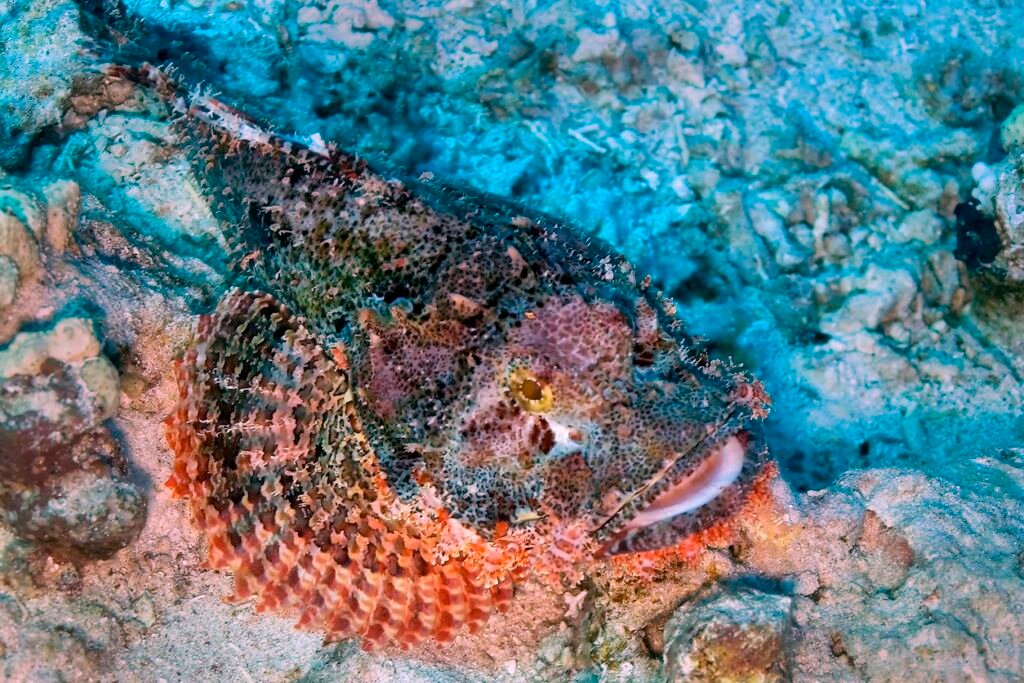
2. Mexican Beaded Lizard
One of two venomous lizards that may be found in Mexico, and is known for thriving in arid environments.
This enormous lizard, which may reach lengths of up to 23 to 26 inches, should be avoided as they’re highly venomous. Mexican beaded lizards get their name from the rough outer scales that give them a texture resembling beads. They have yellow markings, and a large forked tongue.
On the ruins of the ancient Mayan City of Tulum, you might come across several hissing Mexican Beaded Lizards. You should stay away from them as they are highly venomous and can inflict severe wounds. However they tend to shy away from humans and only bite when provoked.
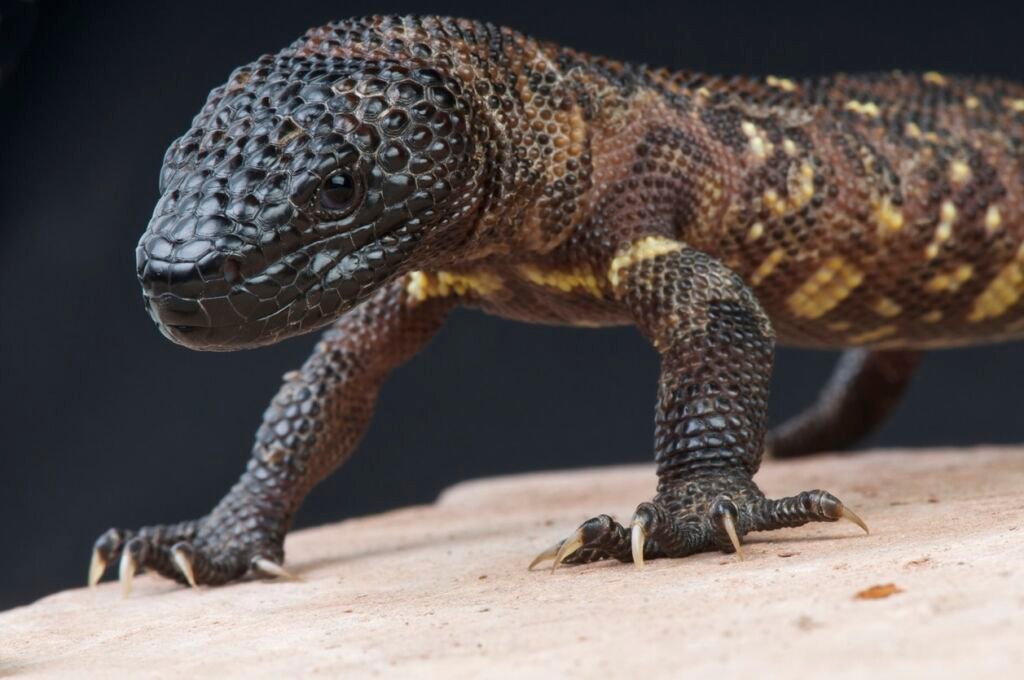
3. Box Jellyfish
These typically seasonal creatures are to be avoided because their tentacles can be employed to administer venom.
The box jellyfish’s sting can be extremely harmful, especially to children and those with severe allergies. While the small box jellyfish found near Tulum should not be a problem, you should still exercise caution and keep an eye out for them when you visit, especially Cozumel, around 81 km away from Tulum, and Akumal, 25-minute away from Tulum.
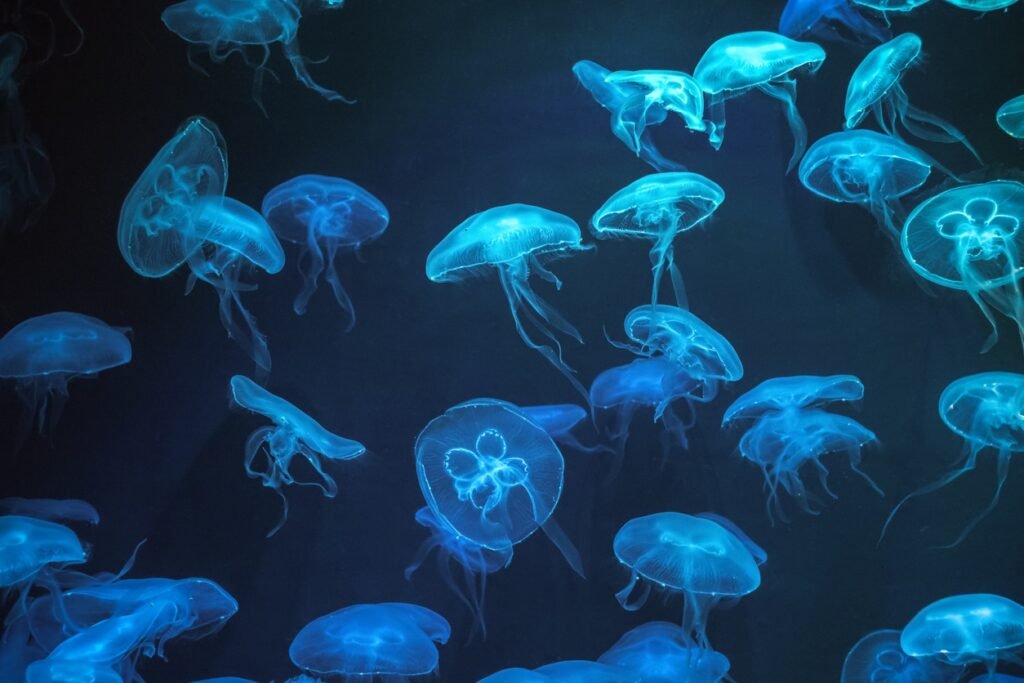
4. Coral Snakes
Mexico’s coral snakes are renowned for thriving in a variety of settings. They enjoy spending the night in various locations, such as caves, leaf heaps, and the nation’s deserts.
Because this snake is the second most dangerous after the black mamba, it must be avoided at all costs. They can reach a maximum length of 50 centimetres and their fangs are incredibly sharp and will transport poison to the victim immediately. You can find them anywhere in Mexico.
If you’re worried about snakes when visiting Tulum, then check out our previous article about snakes in Mexico and what to watch out for.
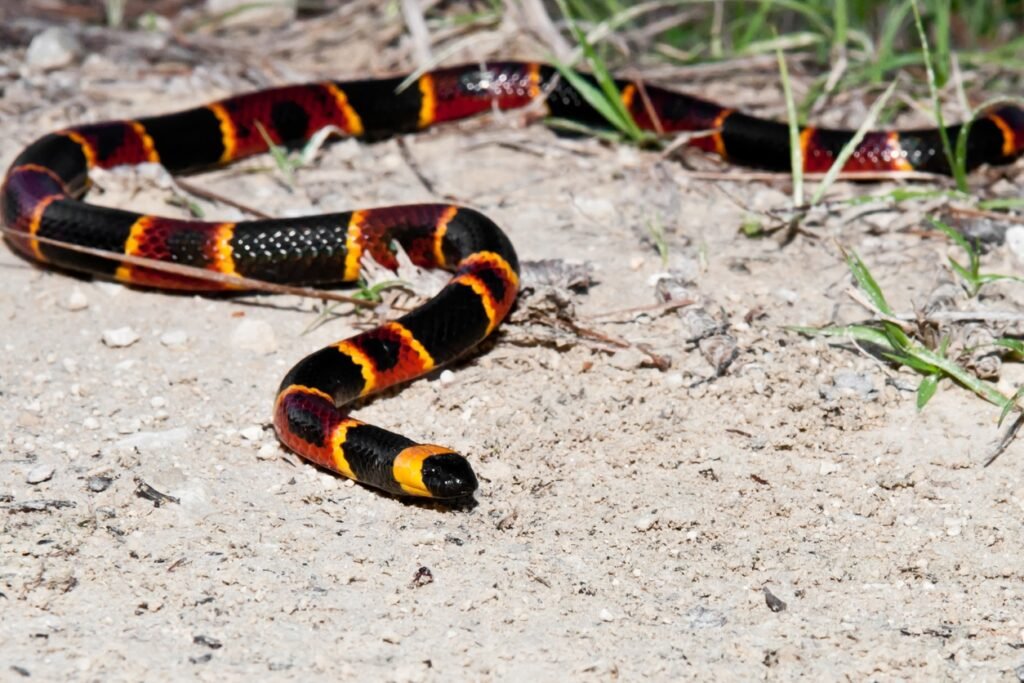
5. Mexican Green Rattler
It’s only in Mexico where you can find this endangered species of snake. It can grow up to six feet long and has some of the best camouflage so they can easily conceal themselves in plain sight.
These snakes frequently behave like rattlesnakes and are incredibly deadly due to their hiding ability. They often eat small rodents but will warn you before attacking. Fortunately, they rarely attack people, but it’s still best to stay away from them.
These snakes can be found across the Yucatan Peninsula, so be careful while exploring the area.


